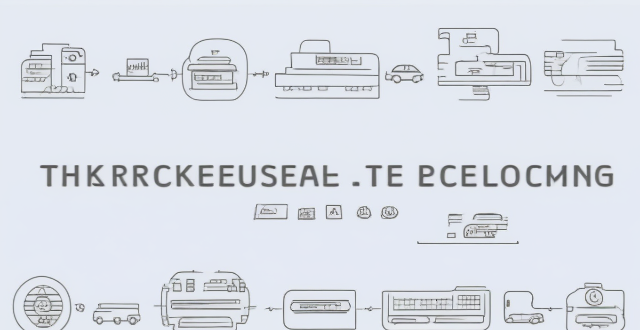The text discusses the concept of hyperloop technology, a proposed transportation system that uses electric propulsion, magnetic levitation, and vacuum tubes to move passengers or freight at high speeds. It explores the advantages of this technology, including its speed, efficiency, and reduced environmental impact. However, it also highlights challenges such as cost, safety, and regulation that need to be addressed before it can become a widespread reality. The text concludes that only time will tell if hyperloop technology will truly revolutionize the way we travel.

Hyperloop Technology: A Viable Solution for Future High-Speed Travel?
Introduction
The concept of hyperloop technology has been around for several years, and it promises to revolutionize the way we travel. But is it a viable solution for future high-speed travel? Let's explore this question in detail.
What is Hyperloop Technology?
Hyperloop technology is a proposed transportation system that uses a combination of electric propulsion, magnetic levitation, and vacuum tubes to move passengers or freight at high speeds. The idea was first proposed by Elon Musk in 2013, and since then, several companies have been working on developing the technology.
Advantages of Hyperloop Technology
Speed
One of the most significant advantages of hyperloop technology is its speed. It can achieve speeds of up to 700 miles per hour (mph), which is much faster than any other mode of transportation currently available. This means that traveling long distances could be done in a fraction of the time it takes now.
Efficiency
Hyperloop technology is also more energy-efficient than traditional modes of transportation like cars, trains, and airplanes. This is because it uses electric propulsion and operates in a vacuum, reducing air resistance and friction.
Environmental Impact
Hyperloop technology has the potential to significantly reduce carbon emissions compared to other forms of transportation. This is because it uses renewable energy sources and produces fewer emissions during operation.
Challenges of Hyperloop Technology
Cost
One of the biggest challenges facing hyperloop technology is its cost. Building a hyperloop system would require significant investment, and the cost of tickets may be too high for some people to afford.
Safety
Another challenge is ensuring the safety of passengers and crew. Hyperloop technology operates at high speeds and in a vacuum, which could pose risks if something goes wrong.
Regulation
Finally, there is currently no regulatory framework in place for hyperloop technology. This means that companies developing the technology would need to work closely with governments and regulators to ensure that their systems are safe and reliable.
Conclusion
In conclusion, hyperloop technology has the potential to be a viable solution for future high-speed travel. Its advantages include speed, efficiency, and reduced environmental impact. However, challenges such as cost, safety, and regulation must be addressed before it can become a widespread reality. Only time will tell if hyperloop technology will truly revolutionize the way we travel.